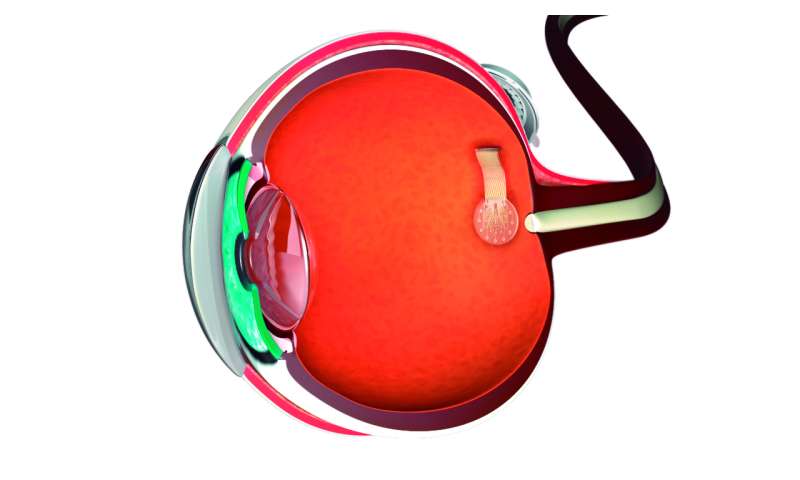ICN2 presents graphene based retina prostheses and a mobile phone-based pollution detector

The Graphene Experience Zone is once again one of the leading examples of European innovation at the Mobile World Congress (Barcelona, 27 February - 2 March). Research centres and companies from all around the continent will be presenting as many as 20 devices, either operative or in development, that reflect the state of graphene and other 2-D material-based advances developed as part of the Graphene Flagship. 2-D materials are just one or a few atoms thick and present attractive properties for the development of applications of interest to numerous industries. The Institut Català de Nanociència i Nanotecnologia (ICN2) is presenting two new technologies in the Graphene Experience Zone.
ICREA professor Jose Antonio Garrido, who leads the Advanced Electronic Materials and Devices Group at the ICN2, will be in charge of representing the institutions that are developing a new generation of retina prostheses. These devices exploit the electrical, flexibility and bio-compatibility properties of graphene and are used to partially recover the sight of people that have lost the functionality of the photosensitive cells in the retina, which translate light into electrical signals, but still have an intact optic nerve that can be stimulated by prostheses that generate electric impulses in response to external stimuli. Through the use of two-dimensional materials in retina prostheses, which have already been tested in other materials, the researchers hope to considerably increase the resolution of the images perceived by the patient's brain. The retina prostheses were developed in collaboration with the Centro Nacional de Microelectrónica (CIBERbbn-CNM-CSIC), the Institut de la Vision (Paris, France) and the Pixium company (France).
Meanwhile, ICREA professor Arben Merkoçi, who leads the Nanobioelectronics and Biosensors Group at the ICN2, is presenting a technology developed and patented by the ICN2 that exploits the optical properties of graphene quantum dots, which are nanostructures that, when illuminated, re-emit light in a certain wavelength. The technology developed by the ICN2 uses their optic properties to detect the presence of certain polyphenolic compounds. This is achieved using paper sensors in which graphene quantum dots have been deposited. The optical properties of these quantum dots are altered in contact with a sample containing polyphenols, losing their brightness when illuminated by ultraviolet light. This phenomenon can be used to very easily quantify, by means of a mobile telephone, the presence of certain compounds that are of major importance for environment control (pesticides etc.) as well as for wine industry (phenolic compounds). It is therefore a cheap, quick and portable method with numerous applications.
ICREA professor Frank Koppens, Group Leader at the Institut de Ciències Fotòniques (ICFO) and leader of the Graphene Flagship work package on Photonics and Optoelectronics, is the scientific coordinator of the Graphene Experience Zone at the Mobile World Congress. He and ICREA professor Stephan Roche, Group Leader at the ICN2 and co-leader of the Graphene Flagship work package on Spintronics, have already started working on the next event that will once again put Barcelona at the forefront of graphene based innovation. That is the Graphene 2017 Conference, which from March 28 to 31 will bring together the greatest specialists in the world at the CCIB in Barcelona, including Nobel Prize winning professors André Geim and Albert Fert.
More information:
Institut Català de Nanociència i Nanotecnologia (ICN2)
Marketing and Communication Department
Àlex Argemí, Head of Marketing and Communication [email=alex.argemi@[email=alex.argemi@icn2.cat]alex.argemi@icn2.cat[/email]; +34 937 372 607; Ana de la Osa, Events & Outreach Coordinator
[email=ana.delaosa@icn2.cat]ana.delaosa@icn2.cat[/email]; +34 937 372 606
www.icn2.caticn2.cat]alex.argemi@icn2.cat[/email]; +34 937 372 607; Ana de la Osa, Events & Outreach Coordinator
[email=ana.delaosa@icn2.cat]ana.delaosa@icn2.cat[/email]; +34 937 372 606
www.icn2.cat
Provided by Catalan Institute of Nanoscience and Nanotechnology